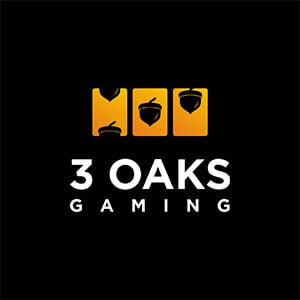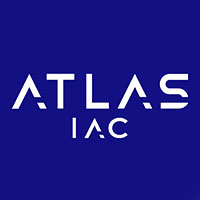These were the words of Sky Betting and Gaming CEO Richard Flint at The Future of Online Gambling seminar in Westminster in April. Not only did this show that fixed-odds betting terminals (FOBTs) are likely to crop up in almost any discussion about UK gambling these days, even in i-gaming seminars, but it seemed a fair point to raise.
Any regular observer of the UK industry will have seen the calls to reduce maximum stakes on the machines from £100 to £2 from groups such as the Campaign for Fairer Gambling and the Local Government Association.
If the decision on future regulation should be data-driven, then we wanted to collate together all of the relevant publically-available data related to the issue, to gage a better understanding of where we are at.
FOBTs per location
Firstly, we wanted to take a look at the opportunities for playing on FOBTs and if there have been any trends in the number of machines per location. We used the UK Gambling Commission’s (UKGC) data that can be seen below.

While the number of premises is not just inclusive of betting shops, but could also include premises at racetracks and other sporting venues, the data shows that the number of FOBTs per location is increasing. However, the number of FOBTs per location is not permitted to exceed four.
The number of FOBTs per location increased from 3.5 to 3.9 from April 2008 to March 2015, coinciding with an increase in locations from 8,872 to 8,952. The total FOBTs has even increased in years where the number of locations has descended, including a reduction of 166 for the last annual period.
UKGC also gave an update for the number of locations as of September 2015, which showed that the number had dropped to 8,819, though the quantity of FOBTs for that point was not given.
What effect does this have on GGY?
Knowing that the number of machines per location has gone up is one thing, but we wanted to see just how dependent operators are on the gross gaming yield (GGY) that is produced from them, particularly in the current climate where the number of locations is retracting.
The below table indicates that the need for FOBTs is indeed very strong.

With over half of off course bookmaker GGY now being generated by FOBTs, the question is simple. Rightly or wrongly, would you be signing up for low maximum stakes if you were in their position?
From April 2008 to March 2015, the off course GGY went up by over £300m, and B2 gaming machine GGY increased by approximately £600m in the same period.
B2 GGY has gone up in all of the last six annual periods, but an increase in machine gaming duty from 20% to 25%, implemented in March 2015, should also be taken into account
The only field that comes close to matching FOBTs for off course GGY is horseracing, which contributed £628m for the last annual period.
Participation - UKGC
The 2010 British Gambling Prevalence Survey, produced by UKGC, contained a lot of information on FOBTs, showing:
• A total of 6% of UK gamblers (10% of male gamblers and 2% of female gamblers), played on FOBTs in the prior year, despite the fact that FOBTs contributed 44% of off course GGY for the 2009/2010 reporting period. The leading fields were lotteries and scratchcards at circa 25%.
• The mean number of gambling activities undertaken in the prior year for FOBT players was 7.4, beaten only by players of poker in pubs and clubs, who averaged 7.9.
• Playing on FOBTs was listed as one of six activities where over half of participants took part in the activity more than once a month (52%).
• The data also showed that people who were A-level educated or equivalent were the most likely to gamble on FOBTs, as 9% of gamblers in this field were FOBT players, higher than the 2% of those with no qualifications and 3% educated to degree level.
• However, in terms of economic activity, the unemployed were also deemed as the most likely to play on FOBTs, with 12% in that category classing as FOBT players, ahead of 9% in full-time education and 5% in paid work.
• Prevalence of playing FOBTs was highest among those with the lowest personal income at 7%.
• The highest-scoring field for participation frequency was less than once a month on average with 48%, while 2+ days per week scored joint-lowest with once a week on 13%.
Note that the percentages given here are the percentage of UK gamblers and not the entire UK population in that field.
Participation – RGT
Here were the key FOBT points from the Responsible Gambling Trust’s analysis of player behaviour, published in November 2014:
• The maximum number of sessions per day for the 10th and 90th percentile were one and eight respectively
• The median value for the average number of sessions per player per day was one
• For the average number of monthly sessions for a player, the median number was three
• The average session length was deemed to be 12 minutes and 53 seconds
• A typical player lost £24.33 over three months and the typical maximum loss was £50.10.
• A typical player was found to have engaged with three different games on FOBTs
• On average, players had three losing sessions during the three-month period
• A total of 67% of players bet on only low-volatility games
• The typical gap between bets was 31.7 seconds
Problem gambling
Industry-wide, UKGC reported that 0.5% of gamblers could be deemed problem gamblers, as of 2015, which virtually flat-lined with the number given for the previous two years. Malcolm George, CEO of the Association of British Bookmakers, said at the Future of Betting Shops seminar in Westminster in April that problem gambling levels have effectively been flat-lining for 15 to 20 years.
In the 2010 British Gambling Prevalence Survey, 8.8% of FOBT players were diagnosed as problem gamblers.
Future regulation
When asked at the Future of Betting Shops seminar about what reducing stakes could do to profitability, Andrew Lyman, director group regulatory affairs at William Hill, said that a change in regulation of FOBTs for stakes of more than £50 to be assisted by staff or to be placed through account play led to an approximate 6% hit in betting shop revenues. This change was implemented in April 2015 and it will be of great interest to see what effect this has on revenue by the end of the 2015-2016 reporting period when released by UKGC.


































